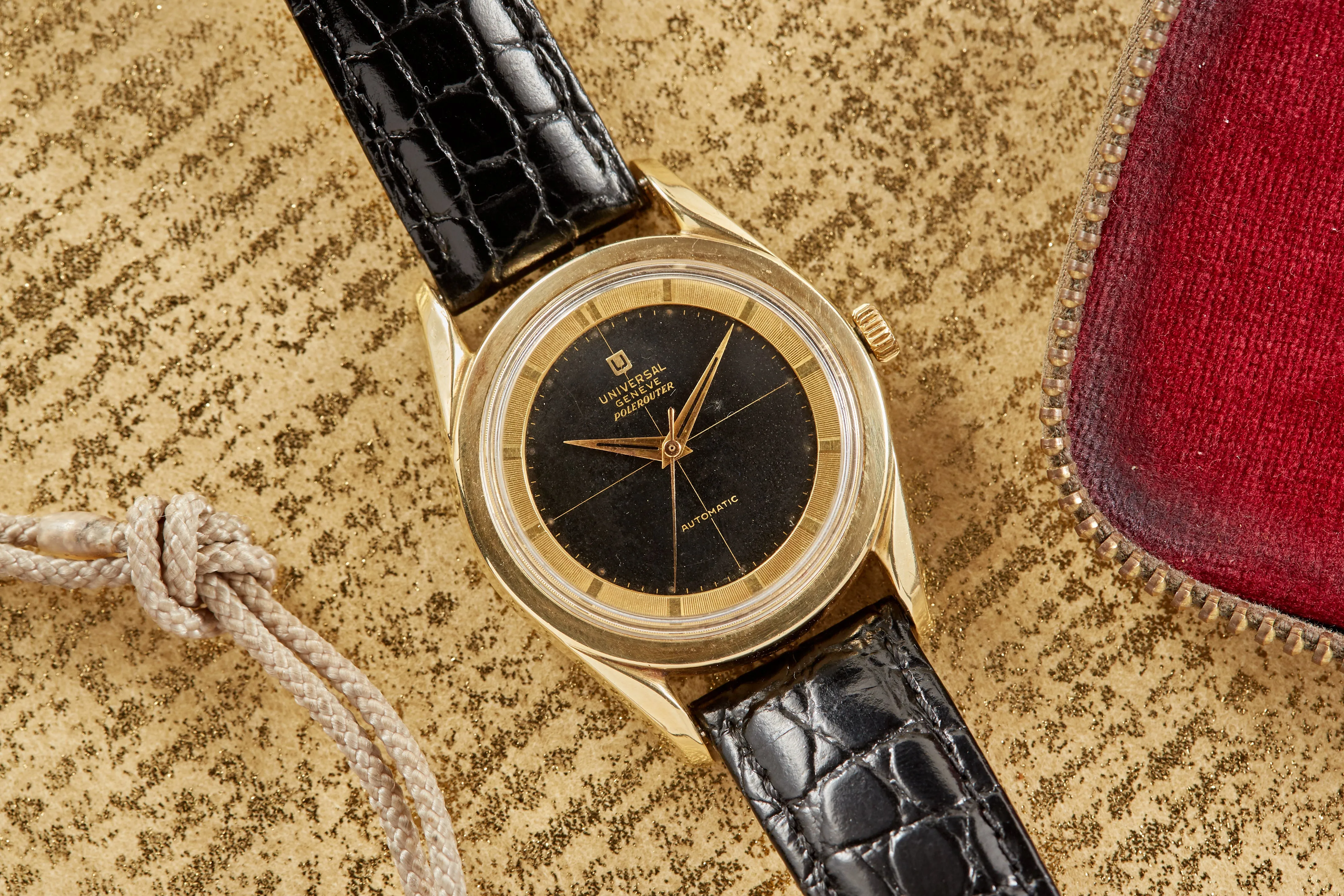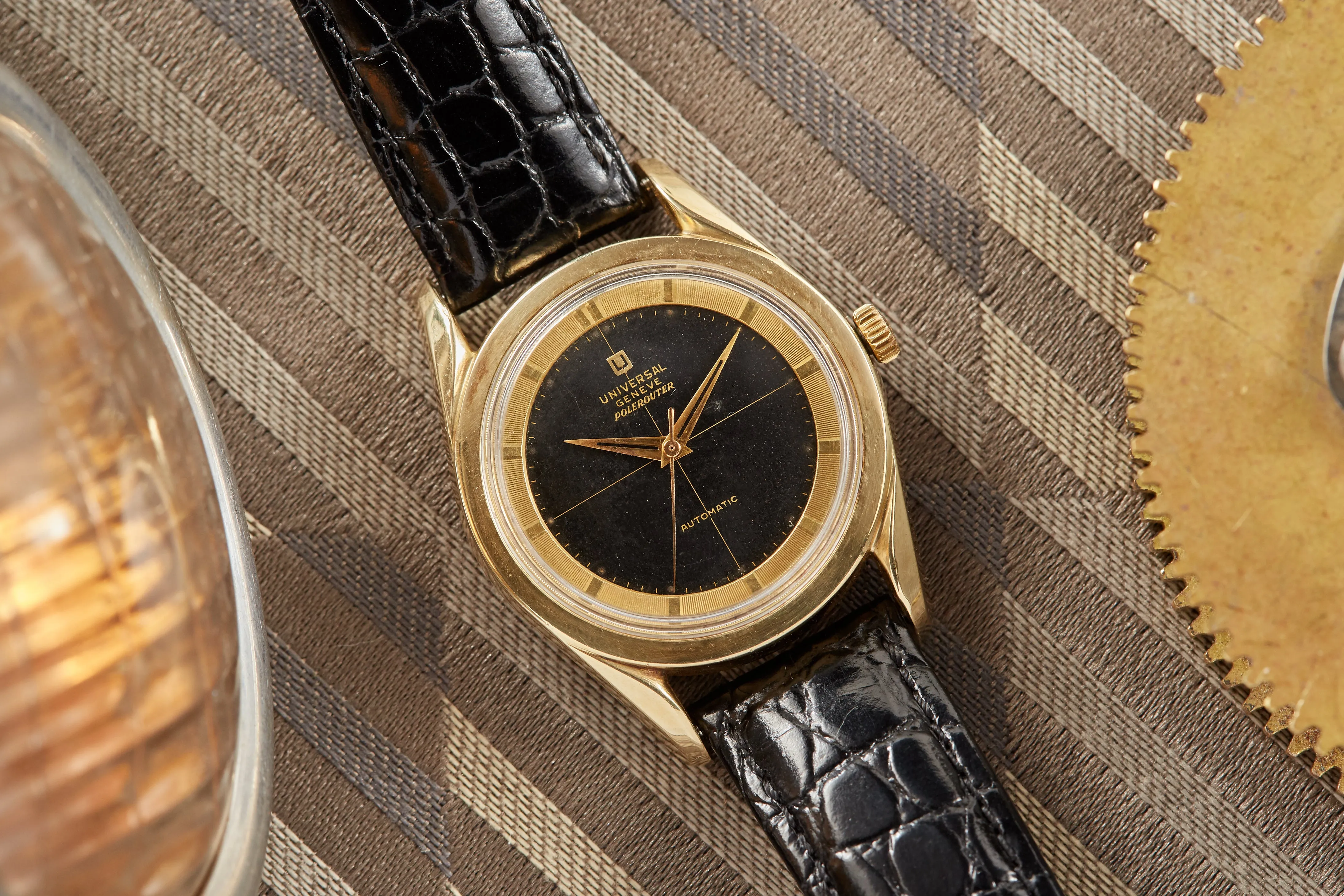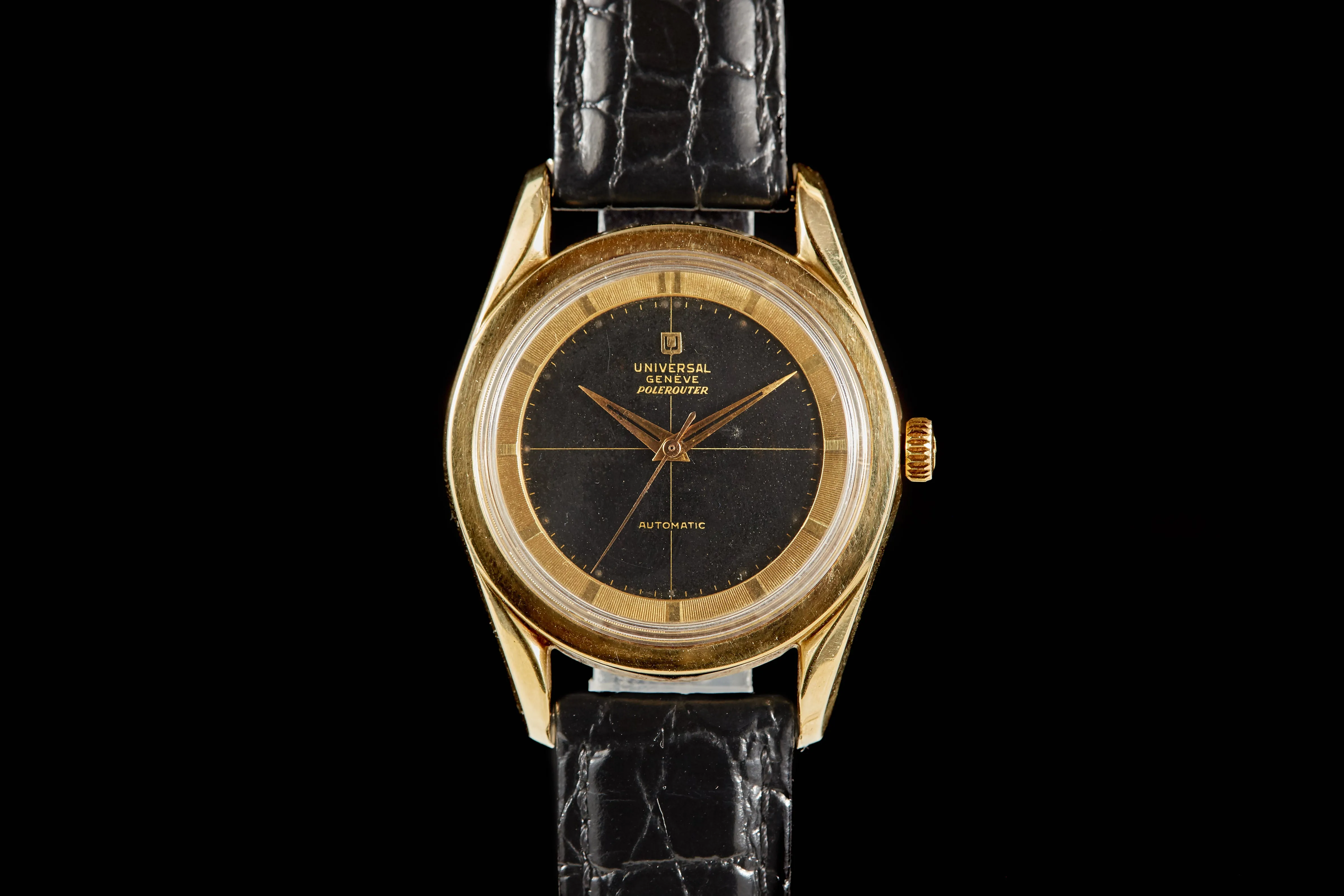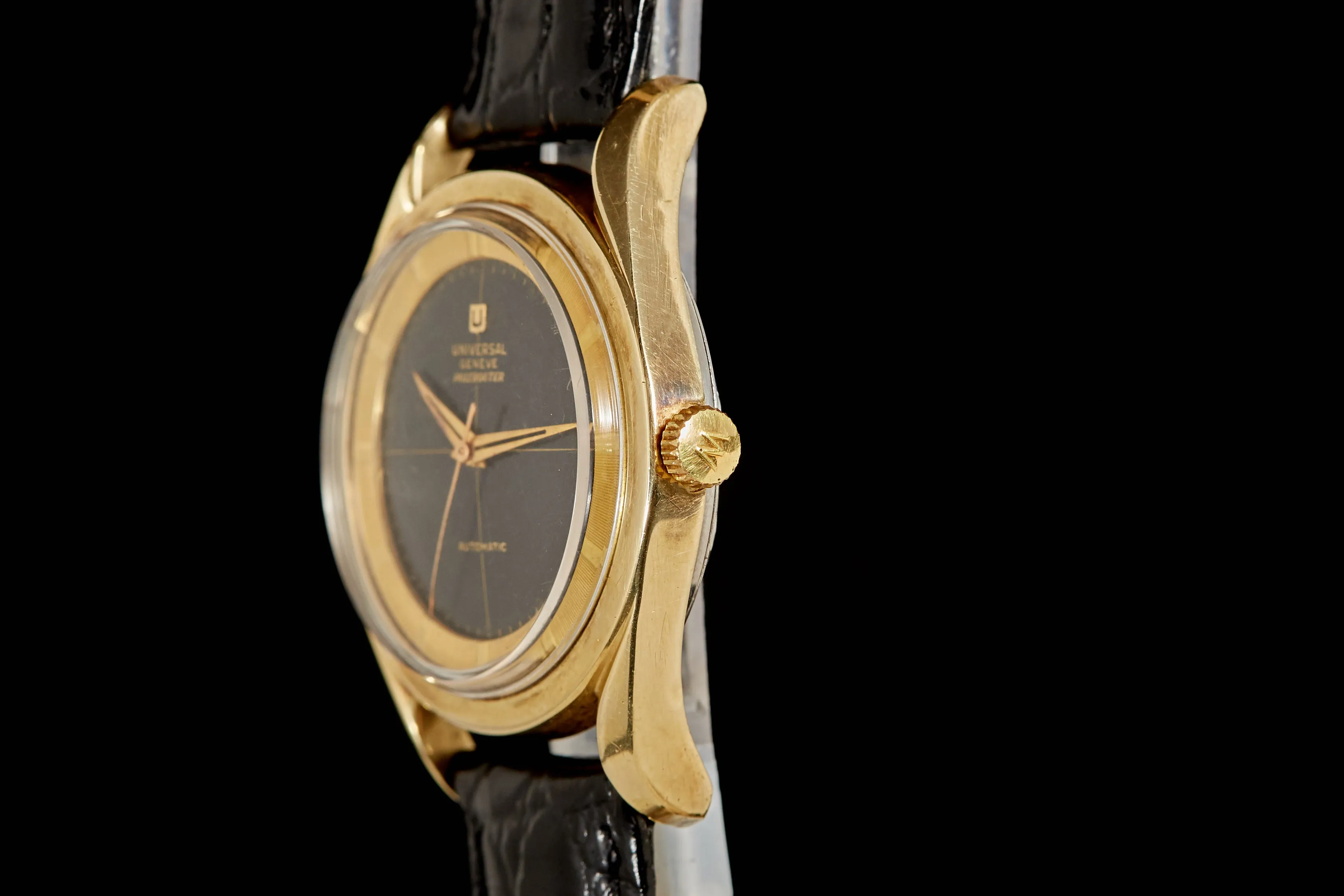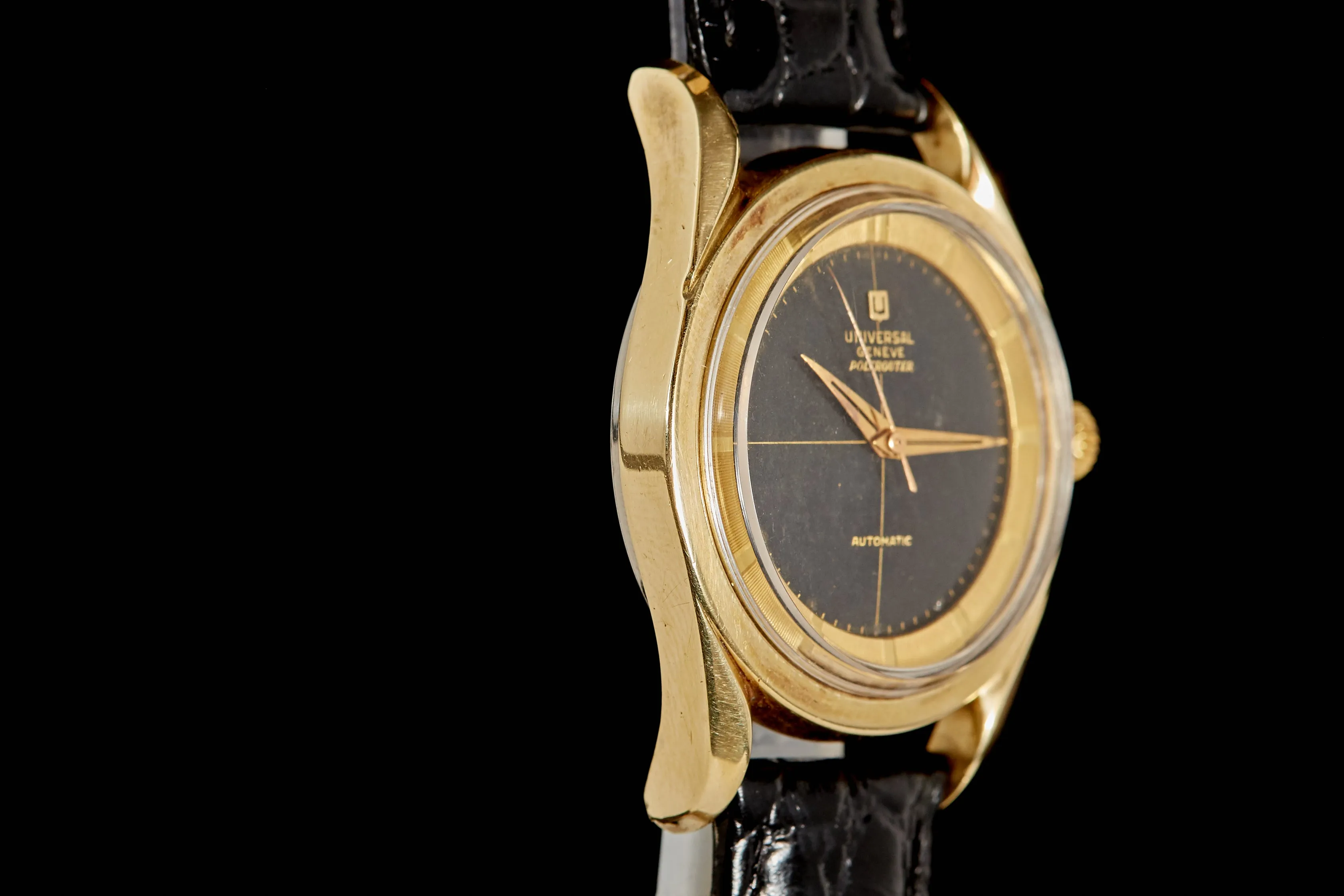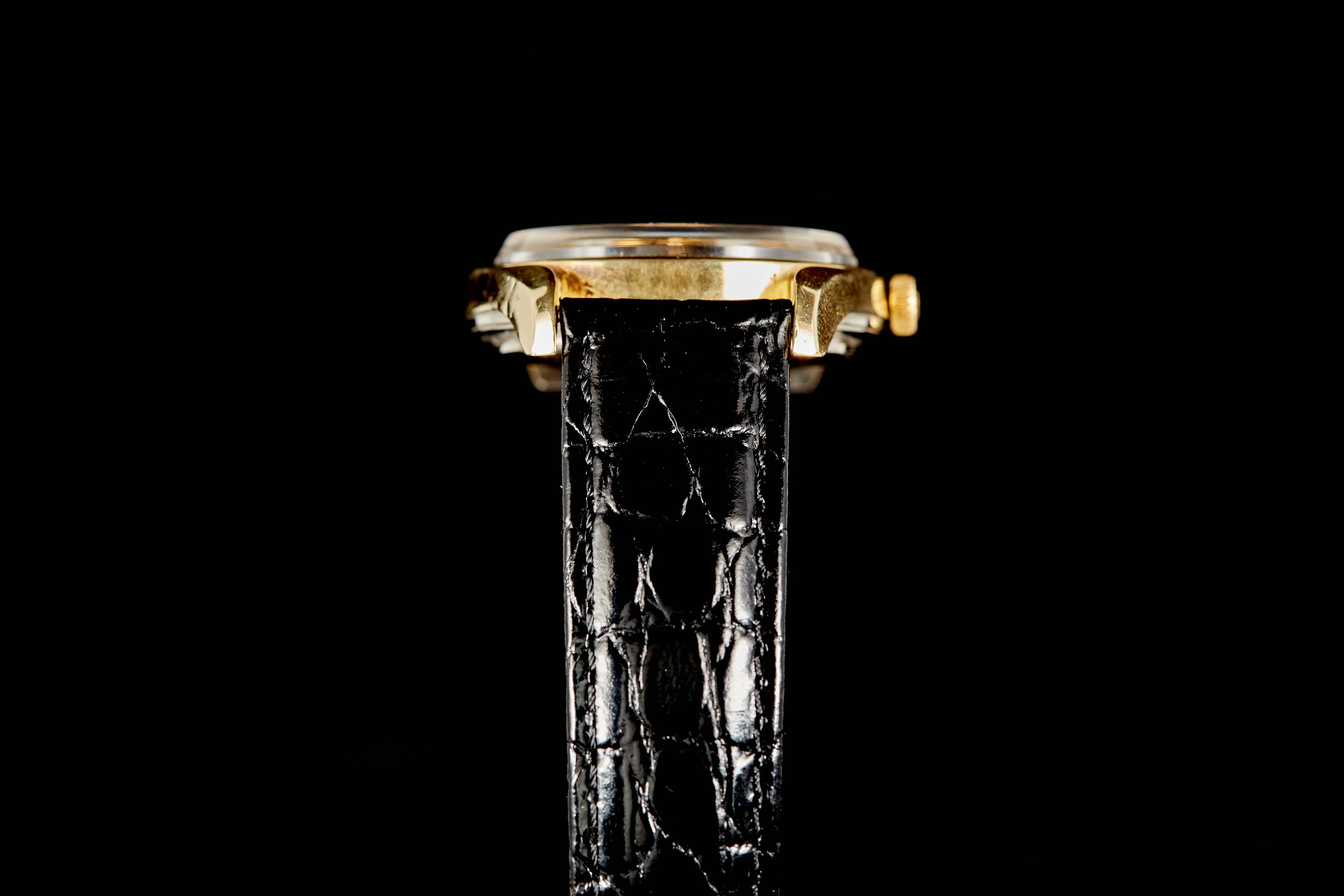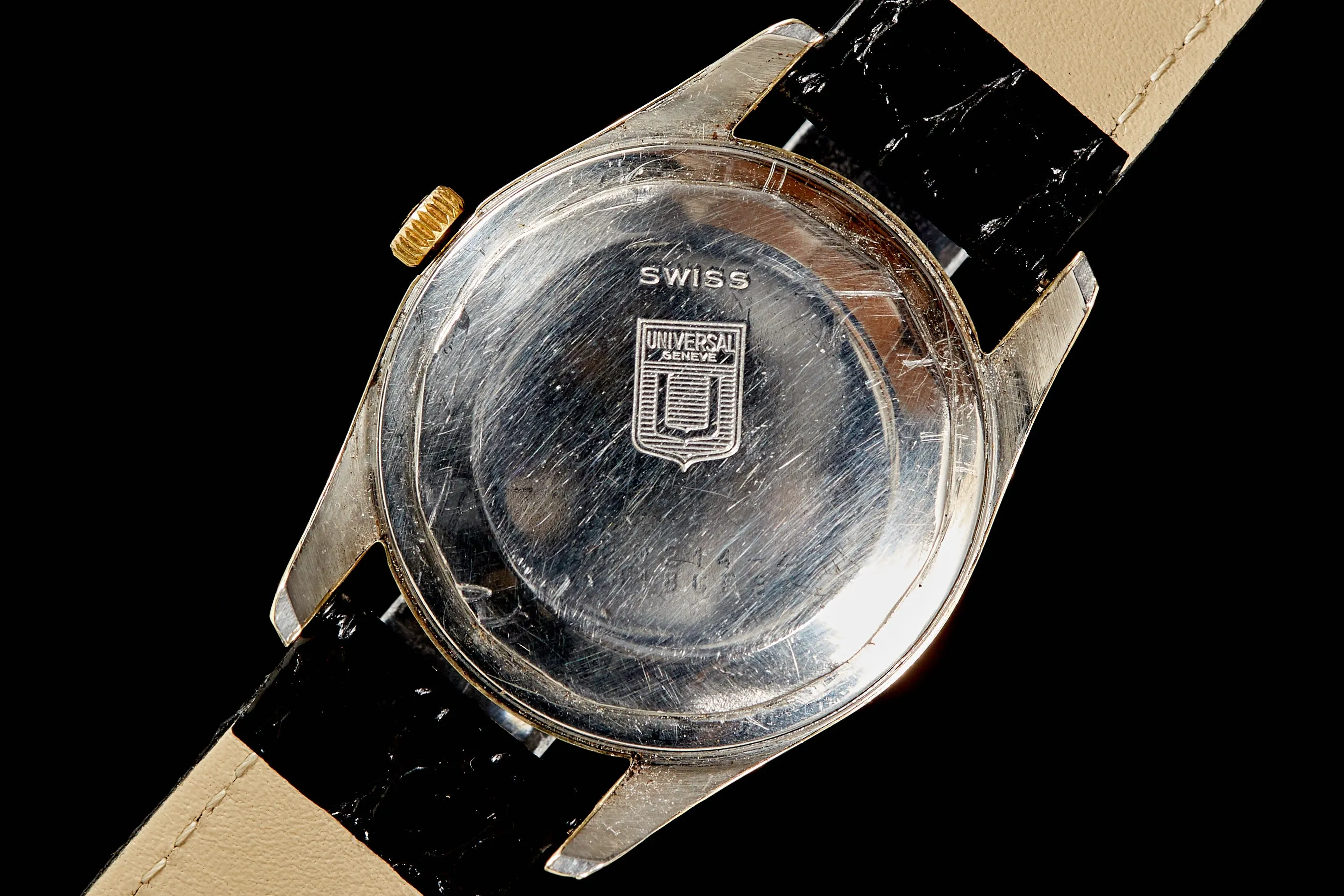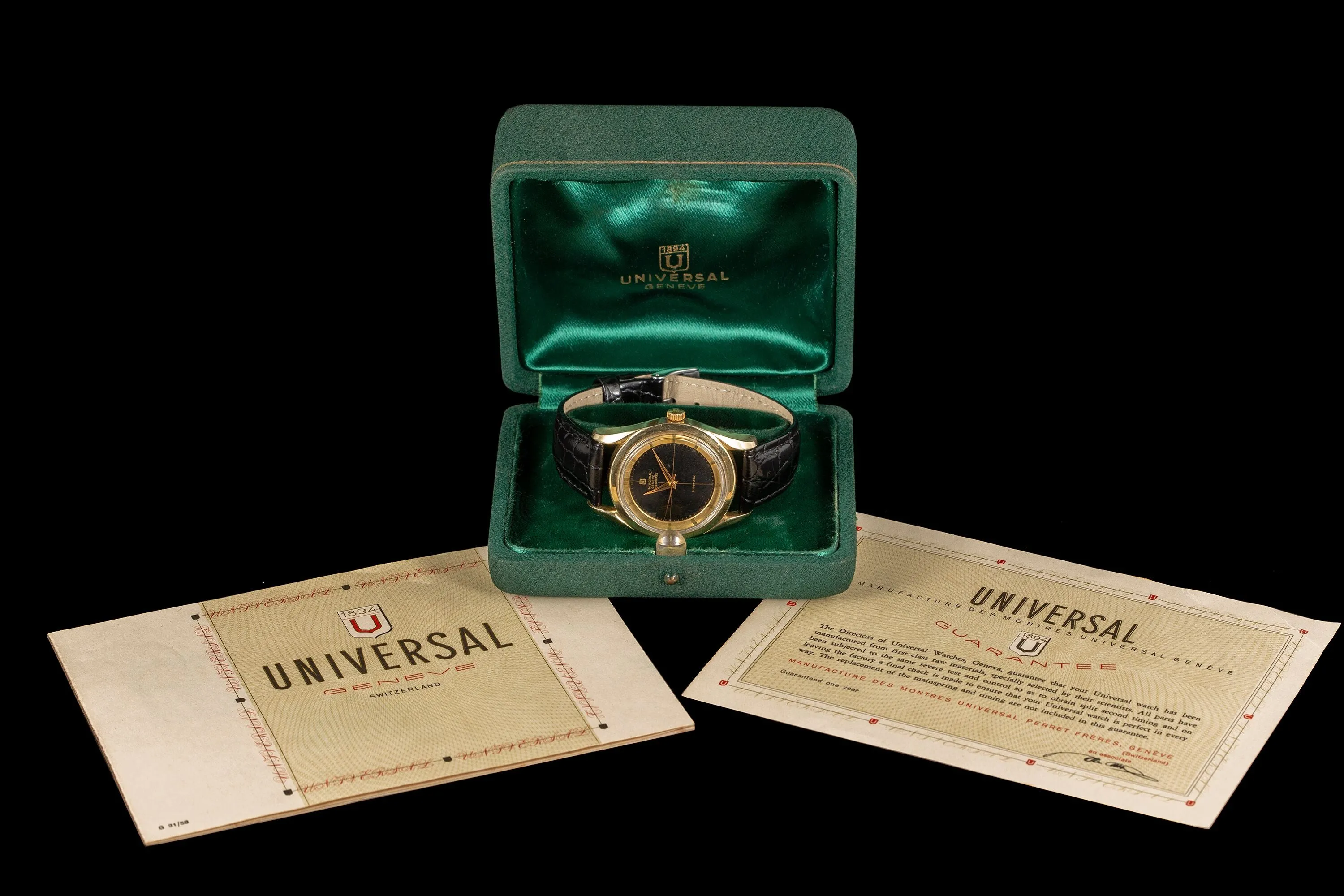Why We Love It
We love Polerouters. Simply put, they're refined and elegant with a rich history and brilliant design. And (for the time being, anyway), they offer a tremendous value proposition in the vintage market.
This particular example, a Reference 20214/4, dates to approximately 1960 and is capped in yellow gold. Its black quadrant dial has aged and faded to a matte black with patinated luminous plots, crisp printing, and an early applied logo at 12:00. Powering the watch is the automatic bumper-wind movement (Calibre 138SS).
Most excitingly, we purchased this watch from the original family, who bought it new in Calcutta, and it includes the incredibly desirable box and original papers - something we have only seen on occasion.
Super, super cool!
The Story
Most of us, even the most diehard collectors, know only one watch designer by name: Gerald Genta.
The man behind the AP Royal Oak, the Patek Philippe Nautilus and the IWC Ingenieur, Genta changed the watch industry with his luxury stainless steel sports watches with sharp 70s lines and his characteristic integrated bracelet design. But before he could pioneer haute horology, he had cut his teeth on a more approachable timepiece; the Universal Genève Polerouter.
The Polerouter was Genta's first watch design brought to market, penned by the young Swiss designer in his early 20s. The watch was a sales success and propelled Genta’s career forward (allowing for the greats such as the Royal Oak and the Nautilus.) The first Polerouter was released in 1954 (and originally called the POLARouter) to celebrate and promote Scandinavian Airlines’ Royal Viking polar flights between New York City, Los Angeles and Europe. The flights forged a new route over the North Pole, reducing flight times between the two continents. Flying over the North Pole presented a unique set of challenges for a watch, and the Polerouter was designed to be highly resistant to magnetic fields (in addition to the usual shock and water resistance) so as to maintain accuracy during the trip.

 Cart(
Cart(